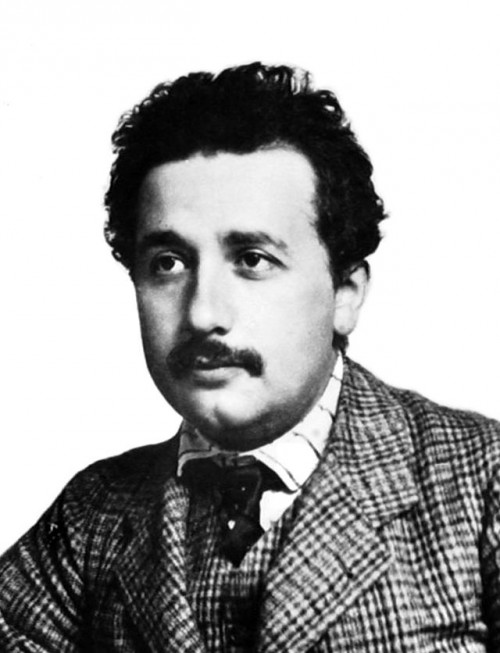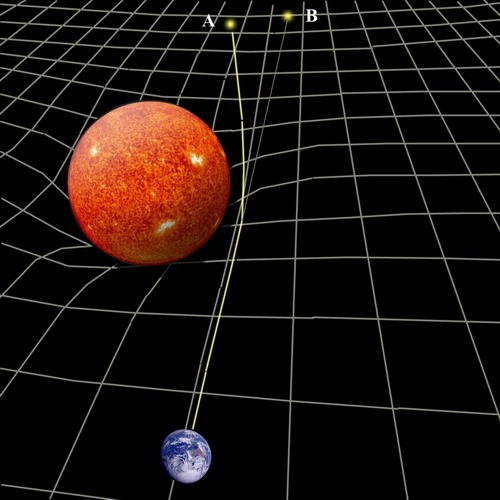
Einstein’s miracle year
Albert Einstein was born on March 14, 1879, in Ulm, Germany. An uncle – Jakob Einstein, an engineer – introduced him to science and math. At age 17, he enrolled in the Swiss Polytechnic Institute (after failing the entrance exam the previous year). He graduated in 1900, and in 1902 he became a junior patent examiner in the Swiss Patent Office in Bern, Switzerland, where he specialized in electrical devices.
All seemingly ordinary enough. But then came the year 1905: Einstein’s annus mirabilis, or miracle year. In that single year, he published four papers that reshaped physics and changed the way we think about matter, space and time.
This was when Einstein was only 26 years old.

Einstein and the photoelectric effect
The first of the four miracle year papers explained what’s called the photoelectric effect. It’s one of the bases for modern-day electronics, with practical applications such as night vision devices. His paper on the photoelectric effect helped pave the way for quantum mechanics by establishing that light is both a particle and a wave.
For this work, Einstein later received a Nobel Prize in physics.
Brownian motion
Another 1905 paper related to Brownian motion. In it, Einstein stated that the seemingly random motion of particles in a fluid (Brownian motion) was a predictable, measurable part of the movement of atoms and and molecules. This helped establish the kinetic theory of heat, which defines heat as the movement, or vibration, of molecules.
In the course of establishing this insight as correct, Einstein also provided definitive confirmation that atoms and molecules do exist.
Special relativity
Also in 1905, Einstein published his Special Theory of Relativity. Before it, space, time and mass all seemed to be absolutes, that is, the same for everyone. Einstein showed that different people can perceive mass, space and time differently. But these effects don’t show up until you are moving at nearly the speed of light (186,000 miles per second; 300,000 km/sec).
For example, relative to those of us left on Earth, time aboard a swiftly moving spaceship would slow down. The people aboard the craft wouldn’t age as fast as their earthly counterparts. Meanwhile, the mass of their spaceship (and everything in it) would increase.
According to Einstein, a spaceship traveling at the speed of light would have infinite mass, and a body of infinite mass also has infinite resistance to motion. And that’s why nothing can accelerate to a speed faster than light speed.
Because of Einstein’s special relativity, modern science considers light as an absolute in a universe of shifting values for space, time and matter.
Mass-energy equivalence
The fourth 1905 paper stated that mass and energy are equivalent. You perhaps know something of this work in Einstein’s famous equation E=mc2.
That equation means that energy (E) is equal to mass (m) multiplied by the speed of light (c) squared. Sound simple? It is, in a way. Simply stated, matter and energy are the same thing.
But the equation is also very profound, in part because the speed of light is such a huge number. As shown by the equation, a small amount of mass can become a large amount of energy … as in atomic bombs.
It’s this same conversion of mass to energy, by the way, that causes stars to shine.

General relativity
But Einstein didn’t stop there. As early as 1911, he’d predicted that light passing near a large mass, such as a star, would be bent. That idea led to his General Theory of Relativity in 1916. This paper established the modern theory of gravitation and gave us the notion of curved space. Einstein showed, for example, that small masses such as planets form dimples in space-time that hardly affect the path of starlight.
But big masses such as stars produce measurably curved space.
The fact that the curved space around our sun was measurable let other scientists prove Einstein’s theory. In 1919, two expeditions organized by Arthur Eddington photographed stars near the sun made visible during a solar eclipse. The displacement of these stars with respect to their true positions on the celestial sphere showed that the sun’s gravity does cause space to curve so that starlight traveling near the sun is bent from its original path. This observation confirmed Einstein’s theory, and made Einstein a household name.
What Einstein couldn’t accept
Interestingly, Einstein’s theories contained elements he himself could not accept. He found it difficult, in some ways, to break too much from earlier theories upon which his work was built.
For example, Einstein never accepted some of the precepts of quantum mechanics, such as the idea of indeterminacy. By the late 1920s, quantum mechanics had moved to the forefront of modern physics, yet Einstein never fully accepted many of the new theories. He declared:
God does not play dice.
Also, Einstein’s 1916 theory suggested that the universe should be either expanding or contracting. Einstein could not accept that notion, and so in 1917 he introduced a cosmological constant into his theory, which would allow the universe to be stationary.
In 1929, however, Edwin Hubble obtained observational evidence that the universe is indeed expanding. Einstein was forced to revise his theory. He called introducing the cosmological constant his greatest blunder.
This part of the Einstein legend illustrates, perhaps, a reason for his global popularity. The great genius could envision mechanisms of the universe in a way many of us have trouble even grasping. His imagination gave him answers to questions most of us would not think to ask.
Yet he remained prone to biases and frailties and thereby thoroughly human … just like the rest of us.
Bottom line: Albert Einstein was born on March 14, 1879. He published his Special Theory of Relativity in 1905 and his General Theory of Relativity in 1916. His work capped off the work of several previous centuries of science … and launched modern physics.
The post Happy birthday, Albert Einstein first appeared on EarthSky.
0 Commentaires